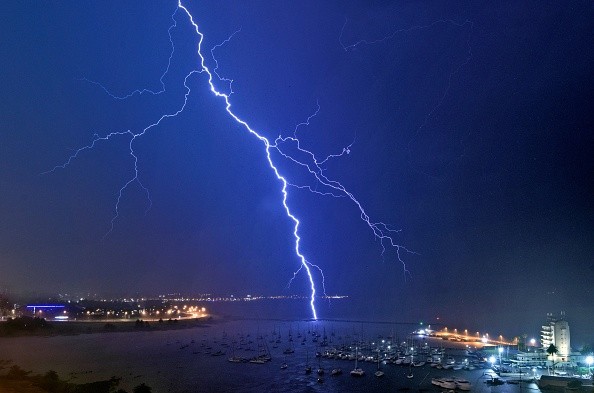A new study has discovered that climate change may also be causing lightning to form in the Arctic, which has previously been connected to wildfires and hurricanes.

Climate Change Linked to Severe Weather Events
According to climate scientists, an increase in the frequency and intensity of lightning in the high Arctic in 2021 is evidence of climate change's impact on global weather patterns. More lightning was observed in the North Pole in 2021 than at any other point on the planet, according to The Hill.
Scientists at Vaisala, a Finnish environmental firm, revealed that in 2021 there was 91 percent more lightning reported at the highest latitudes of the earth, where the North Pole is located.
Since it takes a combination of cold air, warm air, and convective instability for lightning to hit the Arctic in the past, the region has seen fewer lightning strikes in recent years as a result of the region's exceptional warming.
When it comes to climate change, knowing where and how often lightning strikes is important information, as mentioned by the World Meteorological Organization in their 2021 Annual Lightning Report. Since the beginning of this year, scientists have observed lightning 32 miles from the North Pole, the furthest north it has ever been observed in the Arctic.
Vaisala wasn't the only one observing the surge in lightning occurrences in the Arctic; scientists last year published a research that revealed that the increasing number of lightning strikes between 2010 and 2020 tended to connect with global temperature anomalies.
Reports of Multiple Lightning Strikes
Sea ice and permafrost are both melting faster than projected in the Arctic, and many lightning strikes have been reported within a few hundred miles of the North Pole because of the rapid warming in recent years.
Chris Vagasky, a meteorologist with Vaisala, tells The Guardian that the Arctic's impact on the rest of the Northern Hemisphere isn't just theoretical.
There is no such thing as "local" weather, but what happens in the neighborhood depends on what's going on around the world. Vagasky warned that a swings to circumstances in the Arctic could induce more intense cold outbreaks, more heatwaves, or extreme changes in precipitation to Europe.
When it comes to wildland fire, the National Fire Protection Association found that lightning is a big impact, and the average number of acres burned per fire is much larger in lightning fires than human-caused ones.

Scientists Monitor Trends of Lightning in the Arctic
Although the yearly Wildland Fire Summary and Statistics report of the National Interagency Coordination Center indicated that 88% of wildfires are caused by humans, over 55% of the average area burned from 2016 to 2020 was sparked by lightning.
A 2014 study found that for every one degree increase in world average air temperature, the number of lightning strikes will jump by around 12 percent. Temperatures in the Arctic will rise, and lightning strikes will increase as a result.
Researchers can't link a single lightning strike to a change in the Earth's climate, but they must keep an eye on the trends of lightning in the Arctic, which is particularly relevant now and in the future, according to Vagasky.
Related Article : Lightning Strike Kills 76 People in India, Including Victims Who Were Taking Selfies
For more news, updates about lightning and similar topics don't forget to follow Nature World News!
© 2025 NatureWorldNews.com All rights reserved. Do not reproduce without permission.





